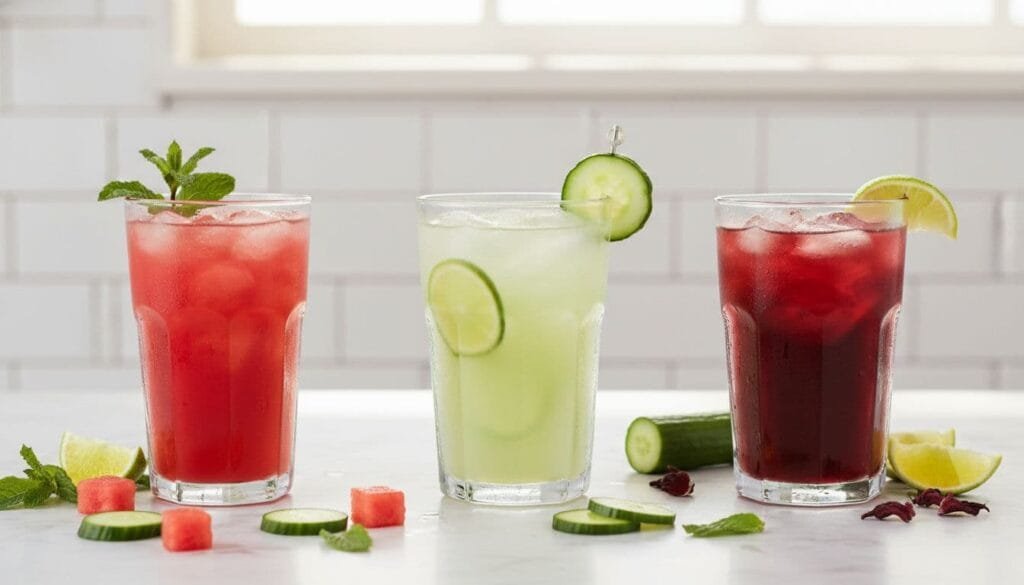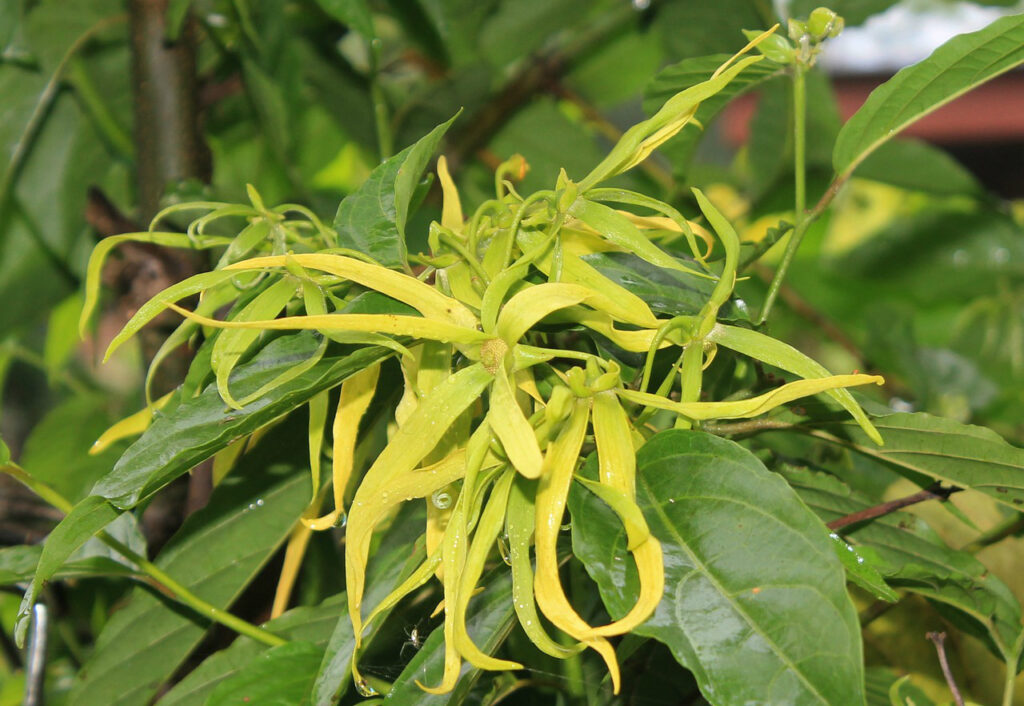What Is Agua Fresca? Ingredients & 5-Minute DIY Recipes
Agua fresca (Spanish for “fresh water,” plural “aguas frescas”) is a light, refreshing drink made by blending ripe fruit with cold water, then lightly sweetening and straining.
Click here to skip to the recipes.
If you want a simple, family-friendly swap for soda, you’re in the right place. Below you’ll find a brief origin, a clear ingredient guide, reliable ratios (start around 1 part fruit to 2 parts water), how it compares to juice or soda, and quick 5-minute recipes.
Keeping a pitcher in the fridge on busy days beats store-bought juice. Use clean, natural ingredients, skip dyes and syrups, and stick to low-tox kitchen habits (glass jars, well-washed produce).
You’ll learn how to choose affordable fruit, how to sweeten gently with honey or cane sugar, and how to keep flavors bright with lime and a pinch of salt. Simple steps, minimal tools, and a drink your whole family will actually finish.
What Is Agua Fresca? Meaning, Origins, and How It Differs From Juice
Agua fresca is a simple blend of fresh fruit or vegetables with cold water, a touch of sweetener, and a squeeze of lime. It is usually strained for a smooth sip, then served ice-cold. If you want a light drink that still tastes like ripe produce, this is it. Think of it as the lighter side of fruit drinks, quick to make any day of the week.
I’d recommend pouring it over plenty of ice, then tucking the pitcher in the fridge for grab-and-go refills. For a pretty touch at parties, try pairing it with the Homemade Edible Flower Ice Cubes Guide.
A Kid-Friendly Definition You Can Share
Here is the kid version: fruit plus cold water with a squeeze of lime, a little sweet, super refreshing.
Example they remember: Watermelon water. Blend 3 cups of watermelon with 3 cups of cold water, add a spoon of sugar or honey, a squeeze of lime, then strain and pour over ice. You could try other ratios as well, depending on the how strong you want the end-result.
From Aztec Traditions to Modern Family Tables
People in central Mexico have mixed fruit with water since pre-Hispanic times, with roots often linked to Aztec-era markets and regional harvests. The idea spread across Mexico, then throughout Latin America, and later into the United States.
Today, you will spot agua fresca at:
- Street stands, often in clear jugs with seasonal fruit.
- Family restaurants, served by the glass or pitcher.
- Casual parties, where it is a budget-friendly way to use ripe produce.
It keeps the fruit at center stage, honors local ingredients, and invites simple tweaks for taste or season.
Agua Fresca vs Juice, Smoothies, and Infused Water
Here is a quick, practical comparison so you can pick what fits your day. If you are curious about juicing’s pros and cons for health goals, this deeper guide can help too: Juicing for Weight Loss with Natural Fruits.
- Juice: more concentrated sugar, thicker taste. Agua fresca is diluted and lighter, since it blends fruit with water, then often strains.
- Smoothie: thick, full of fiber, sometimes with yogurt or milk. Agua fresca is thin and thirst-quenching, best served cold over ice. We love smoothies in our house.
- Infused water: very light taste from steeped slices. Agua fresca is blended for bright flavor and usually strained for a clean finish.
- Sugar context: an 8-ounce cup of lightly sweetened agua fresca often has far less added sugar than soda, but it depends on the recipe and how sweet your fruit is. Taste as you go, then sweeten gently.
Ingredients, Ratios, and Sweetener Options
The formula is simple and reliable: produce, cold water, a little acid (usually lime), sweetener to taste, and optional herbs or a tiny pinch of salt. Think of it like a gentle fruit tea you can blend in minutes. Start with ripe fruit, keep the water cold, and let the lime wake everything up.

A Good Ratio vs. A Great Ratio
The classic starting point for agua fresca is often 1 part fruit to 2 parts water. This gives you a light, refreshing drink.
However, my favorite baseline for a richer, more flavorful drink (and kids love it) is closer to 3 parts fruit to 2 parts water. It holds up better to ice and tastes more robust overall. Here’s that richer baseline:
- 3 cups chopped ripe fruit or peeled cucumber
- 2 cups cold water
- 1 to 2 tablespoons fresh lime juice
- 1 to 2 tablespoons sweetener
- Ice to serve, plus a tiny pinch of fine salt to brighten flavor
I recommend blending everything until smooth, then tasting. If it tastes a little flat, I add a squeeze of lime and a pinch of salt before any extra sugar. Cold dulls sweetness, so always chill, then taste again.
For a stronger base, use a weight method:
- Make a concentrate with 1 part produce to 1 part water by weight. Blend until silky.
- Dilute the concentrate 1:1 with very cold water when serving.
Family batch guidance:
- This baseline makes about 6 to 8 cups once diluted and served over ice.
- For a small test batch, cut everything in half.
- For a party pitcher, double or triple and chill in glass jars.
Quick scaling you can trust:
- Small, 4 cups: 2 cups fruit, 1.5 cups water, 1 tablespoon lime, 1 tablespoon sweetener.
- Family, 6 to 8 cups: 3 cups fruit, 2 cups water, 1 to 2 tablespoons lime, 1 to 2 tablespoons sweetener.
- Party, 12 to 16 cups: 6 cups fruit, 4 cups water, 2 to 3 tablespoons lime, 2 to 3 tablespoons sweetener.
Key takeaways:
- Keep it simple and cold.
- Taste after chilling.
- Salt is your secret helper for bright flavor.
Choose the Best Produce for Flavor and Price
Ripe, in-season fruit makes the best agua fresca. I prefer buying fruit that’s on sale and freezing extra for later. When fresh fruit is pricey, frozen is a smart swap and blends perfectly.
Great options:
- Watermelon, strawberry, pineapple, cantaloupe, mango, cucumber
- Remove seeds and tough peels to protect your blender and your sip
- Citrus works too, but peel away the pith to avoid bitterness
Flowers and grains count as produce here. You can steep dried hibiscus petals for a tart, ruby drink. Or blend soaked rice with cinnamon for a light horchata-style version. Both are classic and budget-friendly.

A few helpful notes:
- Use the white parts of the melon near the rind to add water and cut sweetness.
- Blend citrus segments without the pith to keep the taste clean.
- Cucumbers love mint or basil, added in the last blend for aroma.
Sweetness Your Way: Sugar, Honey, Agave, or No-Sugar Options
Start light. Ripe fruit carries plenty of flavor, and cold water softens sharp edges. Sweeten a little, chill, then taste again before adding more.
Popular choices and how they behave:
- Cane sugar: clean taste, easy to measure. Dissolves well if you blend it in.
- Honey: floral and warm. Add it last in a thin stream while blending.
- Agave: mild and neutral. Great choice for strong-flavored fruits, like pineapple or mango, where you don’t want to change the flavor profile.
- Maple: cozy and deeper. Pairs well with pineapple and strawberry.
Do not serve honey to children under one year old.
Lower-sugar ideas:
- Use very ripe fruit and skip the sweetener.
- Add stevia or monk fruit in tiny pinches, then chill and taste again.
- Lengthen with extra cold water and extra lime for balance.
A quick guide for starting amounts when making 6 to 8 cups:
- Cane sugar: 1 to 2 tablespoons
- Honey or agave: 1 to 2 tablespoons
- Maple: 1 tablespoon, then taste after chilling
- Stevia or monk fruit: start with a pinch, then adjust
Strain or Not? Texture, Pulp, and Clarity
Straining is up to you. It changes the feel, not the heart of the drink.
Your options:
- Fine mesh strainer: smooth sip with a little body.
- Nut milk bag: extra clear, almost like a soft juice.
- No strain: fuller flavor and more fiber, especially nice with strawberries and mango.
To keep foam down, blend on low for 10 seconds at the end. Let the pitcher rest for 2 minutes before straining. That short pause calms bubbles and gives you a cleaner pour.
Serve very cold over plenty of ice. I like thin fruit slices or a few herb leaves on top. Mint with watermelon, basil with cucumber, and lime wheels almost anywhere.
Key takeaways:
- Strain for clarity, skip it for fiber.
- Rest the blend to reduce foam.
- Garnish lightly, keep it cold, and pour over ice.
Final note for busy homes: this drink is forgiving. Use this structure, then trust your taste. When in doubt, add a squeeze of lime and a pinch of salt before any extra sweetener.
Love This Simple, Natural Recipe?
If you love this simple swap, my Natural Living Handbook has 60+ recipes for non-toxic skincare, haircare, laundry, cleaning, and more. Simplify your entire home.
Get it as part of the Natural Living & Organization Bundle, which includes the Finally in Control Planner, to help you organize your recipes, meal plans, and much more.
Health Benefits and Smart Swaps for Families
Agua fresca fits a busy family life. It is simple, refreshing, and you control what goes in the pitcher. With smart choices, the same agua fresca composition that makes it taste bright can also support hydration, add real fruit vitamins, and cut back on added sugar without a fight at the table.
Hydration First, With Flavor Kids Love
Cold water plus water-rich fruit is a winning combo. Fruits like watermelon, cucumber, and pineapple act like a splash of flavor that makes kids reach for seconds.
- What helps most: ripe fruit, very cold water, a squeeze of lime. Lime wakes up the taste, so you do not need heavy sugar.
- Optional boost: a small pinch of fine salt and an extra squeeze of lime can help balance flavor and minerals, especially on hot days or after sports.
- Smarter daily sip: lightly sweetened agua fresca is often a better everyday pick than soda. You get a clean ingredient list and far less added sugar in most home recipes.
On busy school days, blend fruit with cold water, chill, then taste. Add lime before adding more sweetener. Most kids prefer the fruit-forward taste over syrupy drinks.
Key takeaways:
- Keep the base cold and bright.
- Let lime and a tiny pinch of salt carry the flavor.
- Serve over ice for easy all-day hydration.
Vitamins and Plant Goodness by Flavor
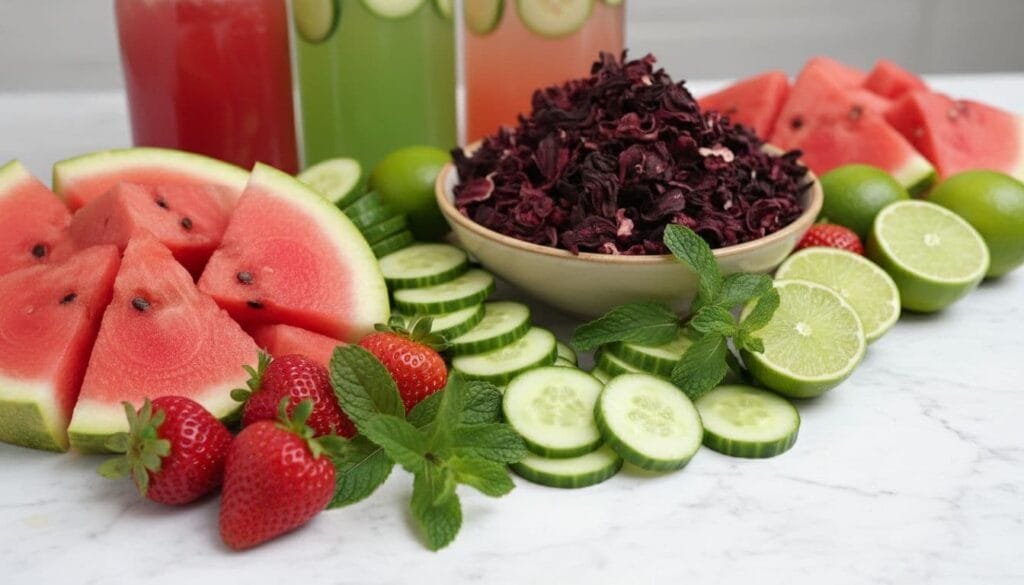
Real fruit carries natural vitamins and helpful plant compounds. You do not need a supplement bottle to get these gentle perks, just a few smart picks at the store.
Try these quick flavor ideas:
- Watermelon: a fresh summer drink that is light and juicy, great for warm afternoons.
- Strawberries: bright and sweet, known for vitamin C in each sip.
- Cucumber: clean spa taste, especially good with mint or basil.
- Hibiscus: a ruby tart sip with a lively, cranberry-like tang.
Keep the focus on whole fruit and fresh herbs. I recommend adding mint to cucumber, basil to strawberry, or a little ginger to pineapple. The goal is flavor first, with gentle nutrition riding along.
Key takeaways:
- Start with ripe fruit for the best taste and natural sweetness.
- Layer herbs for aroma, not sugar.
- Steep or blend, then chill to let flavors settle.
Family Wellness Tips and Safety
A few easy habits keep your pitcher safe and family-friendly. I treat agua fresca like fresh food, not a shelf drink.
- Wash produce well: scrub skins, remove bruised spots, and rinse herbs.
- Use clean tools: a clean blender jar, knife, and cutting board make a difference.
- Chill quickly: refrigerate within 2 hours. Keep leftovers cold and finish within 24 to 48 hours for best quality.
- Allergies and sensitivities: test new fruits, herbs, or hibiscus in small amounts first.
- Pregnancy note: Some people choose to limit strong herbal drinks like hibiscus. When unsure, check with a healthcare provider.
Smart sweetness for kids and adults:
- Start light, then taste after chilling.
- Use very ripe fruit and lime to reduce added sugar.
- For soda cravings, pour over lots of ice and add a lime wheel for a festive feel.
Key takeaways:
- Clean tools, cold storage, and quick chilling protect freshness.
- Introduce new ingredients slowly.
- Mindful sweetness keeps it family-friendly while still tasting great.
Easy Agua Fresca Recipes You Can Make in 5 Minutes
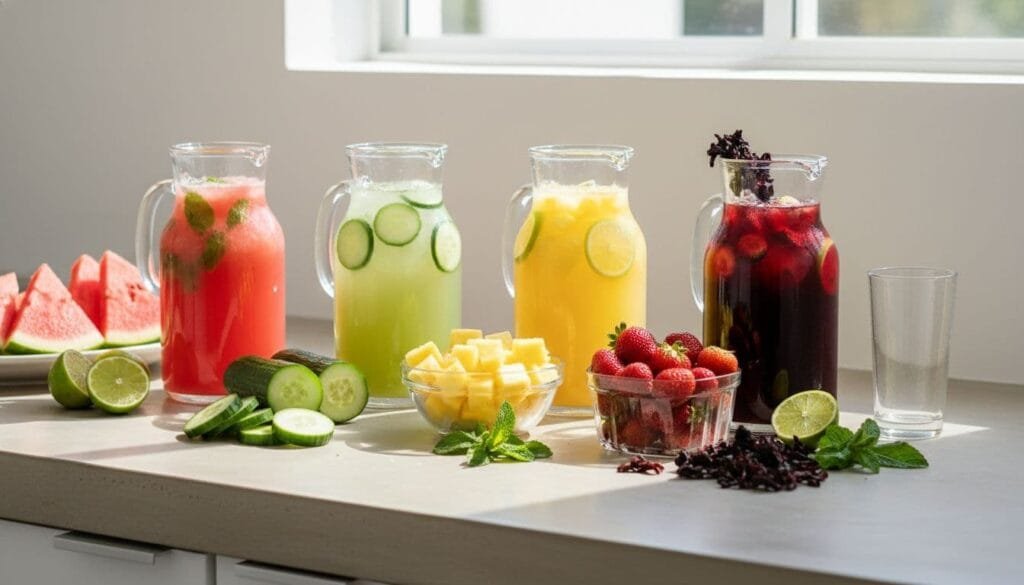
Use simple ratios and cold water to keep flavors bright and aligned to your preferences, or those of your family or guests.
A quick note: You’ll see these recipes adjust the ratios based on the fruit. For example, watermelon is mostly water, so we use less added water (closer to 2:1) than we would for strawberries. Use the guidelines, but always let the fruit tell you what it needs!
These five blends honor classic agua fresca composition, use pantry-friendly ingredients, and scale for families. Each one makes about 6 to 8 cups, perfect for a pitcher of ice-cold sips.
If you enjoy fruit-forward drinks, you might also like these fizzy, naturally sweet treats: Refreshing Italian Soda with Blood Orange: 3 Easy Recipes.
1.) Watermelon Lime Mint
This one disappears fast on warm days. It tastes like a cool breeze on a hot day.
- Ingredients:
- 6 cups cubed seedless watermelon
- 3 cups cold water
- 2 tablespoons lime juice
- 1 to 2 tablespoons sugar or honey
- 6 to 8 mint leaves
- Steps:
- Blend everything until smooth.
- Taste, then strain if you want a clear sip.
- Chill, pour over ice, and garnish with mint.
- Tips:
- Add a tiny pinch of salt to boost flavor.
- For no-sugar, skip the sweetener if the melon is very ripe.
- Yield: about 6 to 8 cups
Light-sugar and no-sugar suggestions:
- Start with 1 tablespoon of sweetener, then chill and taste.
- If your melon is peak-sweet, use only lime and salt.
2.) Cucumber Lime Spa Agua Fresca
Clean, crisp, and extra refreshing after errands or sports practice.
- Ingredients:
- 3 large cucumbers, peeled if waxed
- 3 cups cold water
- 2 tablespoons lime juice
- 1 tablespoon agave, or to taste
- Pinch of salt
- Steps:
- Blend until very smooth.
- Strain for a clear drink.
- Chill well, then pour over ice.
- Options:
- Add fresh mint or basil.
- For zip, blend in a few thin ginger slices.
- Yield: about 6 to 8 cups
Light-sugar and no-sugar suggestions:
- Use 1 teaspoon agave, then adjust after chilling.
- Skip the sweetener and increase the lime for a sharp, zingy, refreshing flavor.
3.) Pineapple Ginger Turmeric
Sunny, gently spicy, and just sweet enough. A reliable crowd-pleaser.
- Ingredients:
- 4 cups ripe pineapple chunks
- 3 cups cold water
- 1 teaspoon grated fresh ginger
- 1 to 2 teaspoons honey or sugar
- 1 tablespoon lime juice
- Tiny pinch of turmeric
- Steps:
- Blend until smooth.
- Taste for spice and sweetness, then strain if you prefer.
- Chill very well before serving.
- Tip:
- Start with less ginger, then adjust.
- Turmeric can stain, so pour carefully.
- Yield: about 6 to 8 cups
Light-sugar and no-sugar suggestions:
- Begin with 1 teaspoon of honey. Pineapple often carries the sweetness.
- If you prefer no sugar, rely only on the sweetness from ripe fruit and add extra lime.
4.) Strawberry Basil Lemon
Bright and family-friendly, with a clean finish over ice.
- Ingredients:
- 4 cups hulled strawberries
- 3 cups cold water
- 1 tablespoon lemon juice
- 1 to 2 tablespoons sugar or maple
- 4 to 6 basil leaves
- Steps:
- Blend until smooth and fragrant.
- Taste, then strain to remove seeds if you like.
- Chill and serve over ice.
- Tip:
- Swap basil for mint.
- Use frozen strawberries for budget and built-in chill.
- Yield: about 6 to 8 cups
Light-sugar and no-sugar suggestions:
- Start with 1 tablespoon of sugar or maple, then taste again cold.
- Skip the sweetener and add 1 extra teaspoon of lemon juice for balance.
5.) Hibiscus Jamaica Refresher
Ruby red and tart with a citrus lift. Simple and striking for parties.
- Ingredients:
- 1 cup dried hibiscus petals
- 4 cups of hot water to steep
- 3 cups of cold water to dilute
- 2 to 3 tablespoons sugar or agave
- 1 to 2 tablespoons lime juice
- Steps:
- Steep hibiscus in hot water for 10 to 15 minutes.
- Strain, add cold water, sweeten, and lime to taste.
- Chill before serving.
- Tip:
- Brew strong, then dilute with ice for gatherings.
- If tart flavors hit hard, add a little more sweetener.
- Yield: about 6 to 8 cups
Light-sugar and no-sugar suggestions:
- Start with 1 tablespoon of sweetener and adjust after chilling.
- For no-sugar, lengthen with more cold water and add an extra squeeze of lime.
Key takeaways:
- Keep the water cold, taste after chilling, and use a pinch of salt to brighten the flavor.
- The heart of agua fresca is simple: ripe produce, water, acid, and gentle sweetness.
- Strain for clarity or skip it for a more textured, full-bodied drink, then pour over plenty of ice.
Make-Ahead, Storage, and Hosting Tips
Busy week ahead? Keep agua fresca simple and stress-free with a few smart habits. I recommend prepping strong concentrates, storing them safely, and setting up serving stations that look pretty without extra fuss. Here are a few tips to keep things efficient in the kitchen.
Prep Ahead and Store Safely

Make a strong concentrate at night, then dilute it with cold water before serving. It keeps flavor bright and your fridge tidy.
- Make a 1:1 concentrate by weight, chill overnight, then dilute 1:1 with very cold water when you pour.
- Store in a clean glass pitcher with a lid. Keep it in the fridge for 2 to 3 days.
- Separation is normal. Shake or stir before serving for a smooth sip.
- Smell and taste check: if it smells sour or tastes off, discard it.
- Freeze extras in ice cube trays.
Use cubes to:
- Chill future batches without watering them down.
- Blend into quick smoothies with a splash of water or yogurt.
- Drop into sparkling water for a light, fruity spritz.
Pro tip: Label jars with the flavor and date. I use painter’s tape and a marker so it peels off cleanly.
Key takeaways:
- Prep a strong base, chill, then dilute when serving.
- Fridge life is 2 to 3 days, and separation is normal.
- Freeze leftovers as cubes for smarter smoothies and a quick chill.
Serve Beautifully for Crowds
Entertaining at a picnic, shower, or Friday family night is easier with a low-maintenance drink station.
- Use a clear dispenser so the color shines. Add thin fruit slices and a few herb sprigs on top.
- Label flavors and a quick note like “lightly sweet” or “no sugar.” Guests appreciate the clarity.
- Offer a no-sugar option alongside a lightly sweetened batch.
- Keep ice on the side to prevent dilution. A separate ice bucket keeps everyone happy.
- Set out kid-friendly cups with lids and straws for easy refills and fewer spills.
- For quick refills, stash a chilled jar of concentrate underneath and top with cold water as needed.
Hosting ideas:
- Picnic: watermelon, mint, and cucumber lime, with lime wedges in a small bowl.
- Baby or bridal shower: strawberry basil and hibiscus with citrus wheels for garnish.
- Family night: pineapple ginger for parents, no-sugar cucumber lime for kids.
Key takeaways:
- Clear dispensers, simple labels, and ice on the side keep things neat.
- Always include a no-sugar choice.
- Refill fast with a chilled concentrate.
Troubleshooting Taste and Texture
A few tiny tweaks can rescue a pitcher in seconds. Taste cold, then adjust with small moves.
- Too bland: add a squeeze of lime, a pinch of salt, or a bit more fruit. Chill for 10 minutes and taste again.
- Too sweet: dilute with cold water and extra lime. Ice helps balance sweetness, too.
- Bitter: remove citrus pith and peel. Blend a little less, then strain for a cleaner finish.
- Too foamy or pulpy: blend on low for the last 10 seconds, rest 2 minutes, then strain through a fine mesh or nut milk bag.
Example fix:
- If a strawberry batch tastes flat, add 1 tsp lime juice and a tiny pinch of salt, stir, chill, then retaste.
Key takeaways:
- Lime and salt sharpen flavor without extra sugar.
- Dilute for sweetness, strain for bitterness, and blend gently to cut foam.
- Always retaste after chilling.
Budget and Sustainability Tips
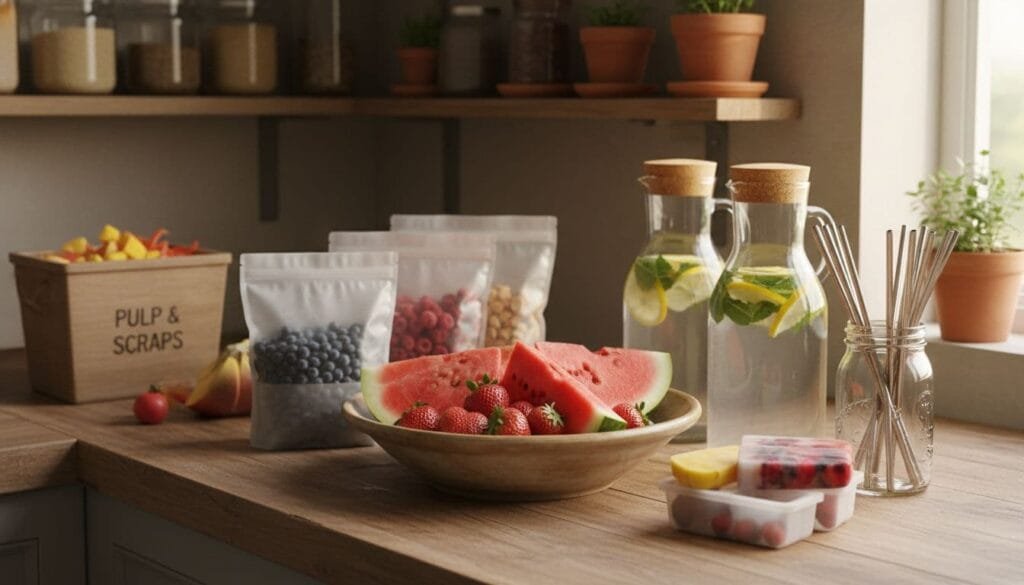
Keep agua fresca affordable and low-waste with smart shopping and reuse.
- Buy in-season fruit or choose frozen when prices spike. Frozen blends beautifully and saves time.
- Use trimmings for flavored ice cubes. Simmer peels you would normally discard (like clean melon rinds or pineapple cores) in a little water to create a “scrap” infusion. Strain this liquid, let it cool, and freeze it in ice cube trays.
- Compost pulp or stir it into popsicles with a splash of yogurt or coconut water.
- Reuse glass pitchers and washable straws. Skip single-use cups when you can.
- Save money with a concentrate routine. Make one batch, dilute as needed, and stretch it over a few days.
Key takeaways:
- Buy smart with in-season and frozen fruit.
- Turn scraps into flavor boosters and popsicles.
- Reuse glass and straws to cut waste and cost.
Refreshing & Amazingly Flavorful
Agua fresca shines because it is light, affordable, and easy to make at home with real ingredients. You now have a clear view of agua fresca composition, smart low-sugar swaps, and quick recipes you can trust on busy days.
Pick one flavor and make a pitcher this week. Let the kids choose the fruit and a simple garnish, then chill it well for after-school sips. Keep it cold and simple, and you will have a drink that fits family life, budget, and taste.
